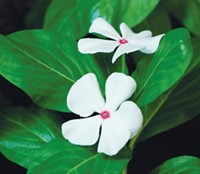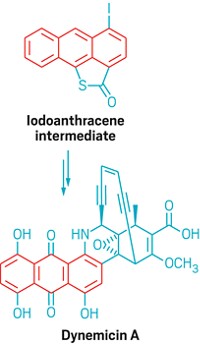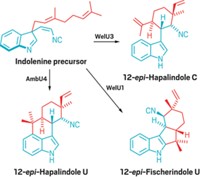Advertisement
Grab your lab coat. Let's get started
Welcome!
Welcome!
Create an account below to get 6 C&EN articles per month, receive newsletters and more - all free.
It seems this is your first time logging in online. Please enter the following information to continue.
As an ACS member you automatically get access to this site. All we need is few more details to create your reading experience.
Not you? Sign in with a different account.
Not you? Sign in with a different account.
ERROR 1
ERROR 1
ERROR 2
ERROR 2
ERROR 2
ERROR 2
ERROR 2
Password and Confirm password must match.
If you have an ACS member number, please enter it here so we can link this account to your membership. (optional)
ERROR 2
ACS values your privacy. By submitting your information, you are gaining access to C&EN and subscribing to our weekly newsletter. We use the information you provide to make your reading experience better, and we will never sell your data to third party members.
Synthesis
Periwinkles As Drug Factories
October 30, 2006
| A version of this story appeared in
Volume 84, Issue 44
Chemists have prodded seedlings of the medicinal periwinkle plant to make a variety of nonnatural terpene indole alkaloids in a process that could help produce hard-to-synthesize drugs (J. Am. Chem. Soc. 2006, 128, 14276). The periwinkle normally produces a treasure trove of natural products, including the anticancer agent vinblastine (shown, Me = methyl, Ac = acetyl), which is assembled in mature plants from two tryptamine-based precursors (tryptamine-derived portion is red). Semisynthetic derivatives of vinblastine continue to show promise in clinical trials, notes Sarah E. O'Connor of MIT. In hopes of easing access to these and other nonnatural vinblastine analogs, O'Connor and Elizabeth McCoy fed periwinkle seedlings various tryptamine derivatives. The seedlings make a variety of complex terpene indole alkaloids from the tryptamine derivatives, including analogs of the precursors from which vinblastine is assembled. Manipulating natural biosynthetic pathways in this way is common in bacteria but it's largely untackled in plants, the researchers note.






Join the conversation
Contact the reporter
Submit a Letter to the Editor for publication
Engage with us on Twitter